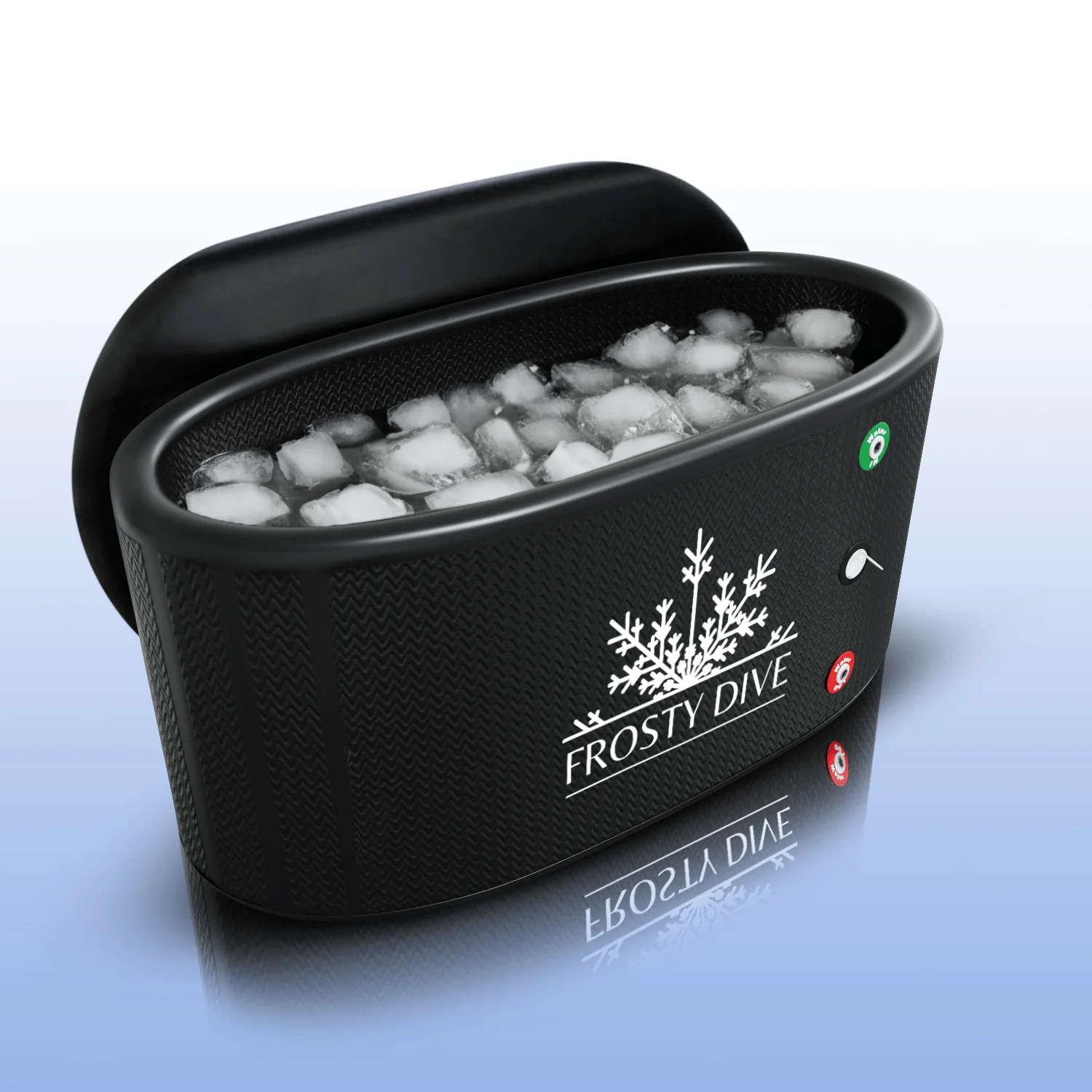
Water Chillers for Ice Baths: A Guide to Optimal Recovery
In the world of fitness, athletics, and recovery, ice baths have long been a go-to method for reducing muscle soreness, minimizing inflammation, and speeding up recovery. While traditional methods of ice baths involve filling a tub with ice and cold water, the modern solution to controlling water temperature is the water chiller for ice baths. This piece of equipment ensures that athletes can access precise, consistent, and controlled cooling, providing a more effective and reliable recovery experience.
What is a Water Chiller for Ice Baths?
A water chiller for ice baths is a specialized machine designed to cool and maintain the temperature of the water in a bath. It works by circulating cold water through a system of coils or cooling plates, lowering the water temperature to a set level and keeping it consistent throughout the duration of the ice bath. Unlike traditional methods, which rely on adding ice to a tub of water and hoping it reaches the desired temperature, a chiller maintains optimal conditions for muscle recovery.
Water chillers are equipped with temperature control mechanisms, often ranging from 40°F to 60°F (4°C to 15°C), allowing for precise adjustments based on individual needs or protocols. This consistency in temperature is crucial for ensuring the best recovery results.
Benefits of Using a Water Chiller for Ice Baths
- Consistent Temperature Control: One of the biggest advantages of a water chiller is the ability to maintain a constant temperature throughout the ice bath. This eliminates the variability of ice melting and the water gradually warming up, which can undermine the effectiveness of cold therapy.
- Convenience and Time Efficiency: No need to waste time purchasing large amounts of ice or waiting for the water to cool down. A water chiller allows you to quickly set up an ice bath with minimal hassle, making it easier to incorporate recovery routines into your daily training schedule.
- Improved Recovery: Maintaining the optimal temperature throughout the session maximizes the benefits of ice baths, such as reducing muscle inflammation, promoting circulation, and alleviating soreness. With a consistent chill, athletes can experience more effective muscle recovery, which is especially important after intense workouts or competitions.
- Energy Efficiency: While traditional ice baths require continuous ice purchases, water chillers are typically designed to be energy-efficient, cooling the water without excessive energy consumption. This is especially beneficial for commercial settings like gyms, athletic centers, or sports teams that need to offer ice baths to multiple athletes.
- Customizable Settings: Many water chillers offer adjustable temperature settings, so you can tailor the chill to your specific recovery needs. Whether you’re a high-performance athlete looking for a more intense cooling effect or someone just trying to ease muscle tension, the ability to adjust the water’s temperature is a key feature of these chillers.
How Water Chillers Work
Water chillers operate using a refrigeration system that cools the water by circulating it through a series of pipes or coils. These systems are designed to quickly cool large volumes of water and maintain a steady temperature over extended periods. Some of the core components of a water chiller include:
- Compressor: The heart of the chiller, compressing refrigerant gas to remove heat from the water.
- Evaporator: This is the part where the heat exchange happens, cooling the water as it passes through.
- Thermostat: Allows users to set and maintain a consistent temperature for the bath.
- Circulation Pump: Ensures that the water moves consistently throughout the bath, preventing hot spots and ensuring uniform cooling.
Optimal Temperature for Ice Baths
The ideal temperature for an ice bath typically ranges from 50°F to 59°F (10°C to 15°C). This temperature range is effective at reducing muscle inflammation, constricting blood vessels, and numbing pain. Once the cold exposure is over, the body warms back up, and fresh oxygenated blood rushes back into the muscles, aiding in recovery.
For advanced athletes, the range may dip lower, but it’s essential to understand that colder isn’t always better. Cold shock (extreme low temperatures) can be counterproductive if not managed correctly, especially for individuals who aren’t used to intense cold exposure. Gradual adaptation is key to preventing injury or undue stress on the body.
How to Use a Water Chiller for an Ice Bath
- Set Up the Chiller: Fill the bath with clean water. Connect the chiller to the bath using the supplied hose or connections and turn on the machine.
- Adjust the Temperature: Set the chiller to the desired temperature (typically 50°F to 59°F or 10°C to 15°C). Some chillers have digital screens with easy-to-use controls to make adjustments simple.
- Start the Ice Bath: Once the chiller reaches the set temperature, you’re ready to immerse yourself. Many athletes recommend starting with 5-10 minute sessions if you’re new to ice baths and gradually increasing the duration as you become more accustomed.
- Relax and Recover: Stay still and relax during the bath. Ensure your body is fully submerged for maximum benefit.
- Post-Bath: After completing your session, warm up gradually. Avoid jumping into a hot shower immediately as it may reverse the benefits of the cold exposure.
Considerations When Choosing a Water Chiller for Ice Baths
When selecting a water chiller for ice baths, there are several factors to consider:
- Size and Capacity: Make sure the chiller is suitable for the size of your ice bath. Commercial models are usually larger and designed for multiple users, while personal units may be more compact.
- Temperature Range: Look for a chiller with a wide temperature range to adjust according to your needs. Some advanced models can drop temperatures lower than the average chiller, but most athletes find 50°F to 59°F optimal for effective recovery.
- Portability: Depending on the setup, portability can be an essential factor. If you need to move the chiller between different locations or storage spaces, look for a model with wheels or lightweight construction.
- Durability and Build Quality: Since ice baths are typically used in challenging environments, durability is a key factor. Look for models made from corrosion-resistant materials and those with strong, reliable components.
- Ease of Use: Choose a chiller that is user-friendly with clear instructions and simple controls for temperature adjustment and maintenance.
Conclusion
Water chillers for ice baths represent a major advancement in recovery technology, offering athletes and fitness enthusiasts the ability to optimize their post-workout routines with precision and convenience. By ensuring consistent, controlled cooling, these machines maximize the benefits of cold therapy, promoting faster recovery, reducing muscle soreness, and enhancing overall performance. Whether you’re a professional athlete or a weekend warrior, investing in a water chiller for ice baths can make a noticeable difference in your recovery process.


